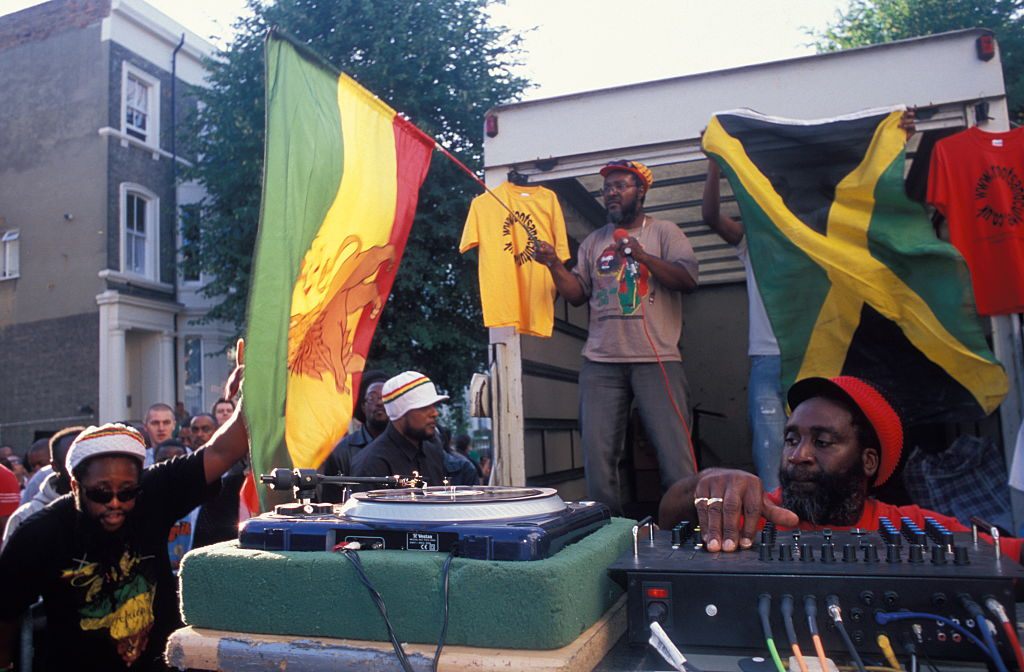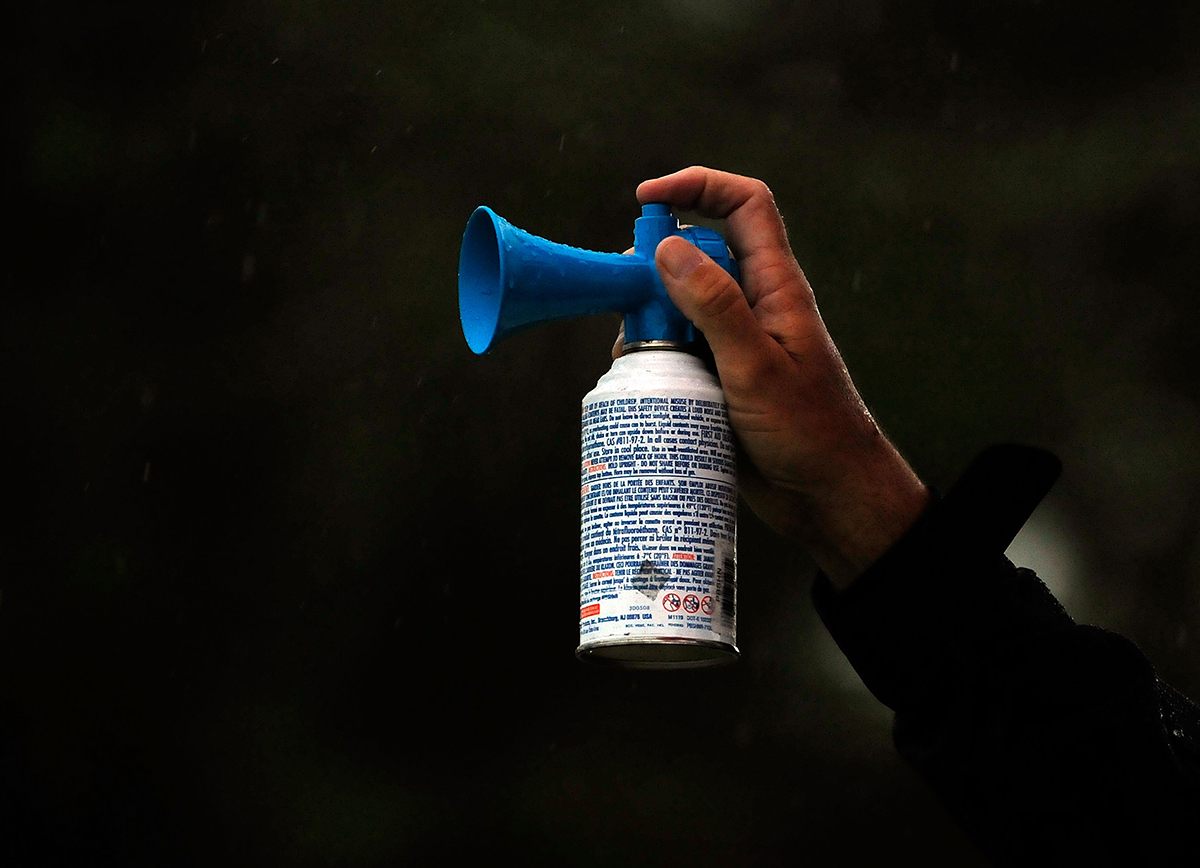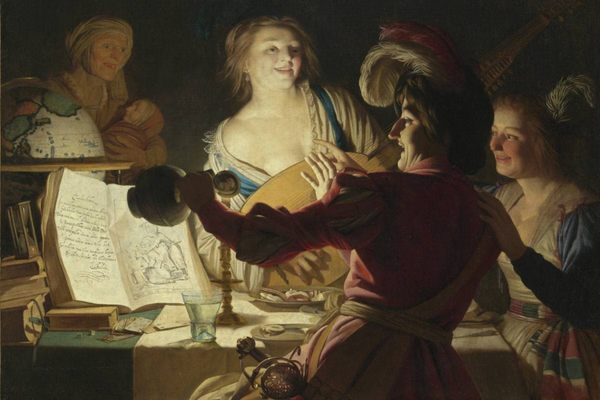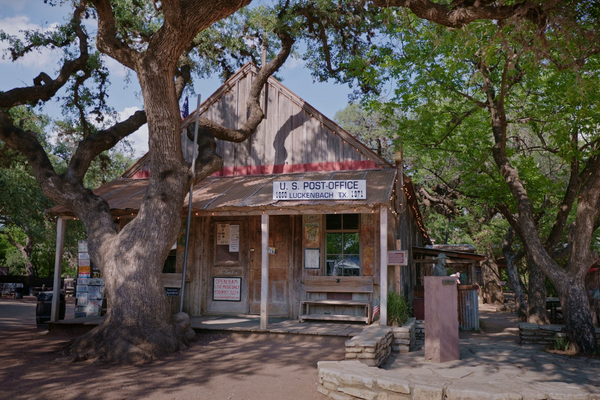Bwaaat! How the Air Horn Made Noise in Pop Music
Pay attention.
There are a lot of awards given out at the Grammys (from Best Regional Roots Music Album to Best Classical Compendium, and there used to be a lot more), but there isn’t one for specific sounds. Think the tinkling 808 in Afrika Bambaataa’s “Planet Rock,” G.C. Coleman’s Amen break, or a judiciously whacked cowbell. They’re touchstones, musical cues, genre-definers. One sound that would be eligible for a lifetime achievement award—a sound that has its origins not in music but as a warning—is the blast of a portable air horn. You might have heard one recently in Major Lazer’s “Too Original” or Drake’s “Controlla.” How did something intended to do little more than make a very loud noise become so integral to hip-hop, reggae, and pop music?
Air horns, which were originally (and are still) used on ships and locomotives, push compressed air or steam past a reed or diaphragm to make a very loud noise. The car dramatically altered the air horn’s size and ubiquity and paved the way for portable air horns. The portable version, a horn attached to a can of compressed air, has been used for self-defense, emergency alerts, lifeguarding, and sporting events. Its widespread use in music is a recent development, and to find its origin, one has to go to the Caribbean.

Music journalist Jeff Weiss went looking for the origins of the air horn in music in Jamaica’s dancehall scene. Dancehall stands out among musical genres for its audience and performative aspects. It was created in the 1970s by and for Jamaica’s marginalized lower class (known as “downtown people”), who coalesced in outdoor venues to dance and escape their worries. Its distinctive mixture of West African beats, traditional mento folk music, funk, and blues, is presented by a selector, who chooses prerecorded tracks, a DJ, who emcees, and a sound engineer—together known as a sound system. In dancehall, sound systems and their selectors compete for the attention and love of the audience through call-and-response, a form of communication not unusual across the Atlantic in West Africa.
Competing selectors use “all manner of interaction with the crowd from giving speeches to the origin of rapping,” says Norman Stolzoff, anthropologist and author of Wake the Town and Tell the People, a study of dancehall culture. The ultimate goal of the selector is to play a song so good that the crowd will physically, ecstatically move from behind the sound system to in front of it. The selector then rewinds the song to tap into this momentum. The whole process is called a “forward.” Competitive dancehall is like a land war, forwards are the spoils, and attention is the weapon.

Jamaica was a British colony for over 300 years, until 1962. Even today, military pomp is on display when influential figures, such as members of the British royal family, visit. A 21- or 62-gun salute may be used to mark the occasion. “On the Queen’s birthday, she gets a gun salute,” says Julian Henriques, of University of London at Goldsmiths, who researches sound system culture. “It’s a traditional military noise that has impact and shock value.”
Loud cannon booms, Henriques states, can mean danger or celebration—they’re disruptions of sound space that draw attention, in the lineage from the sirens of Greek myth to the wail of a modern police siren.

Reggae historian Roger Steffens connects the military cannon salute to dancehall through the practice of what is called a “boom salute,” in which pistols are fired in the air at the dancehalls.” Stolzoff concurs that historically the boom salute involving guns is a significant part of dancehall. During the 1960s, rival government parties politicized Kingston’s communities and gangs, and the clash seeped into dancehall culture. Selectors and sound system owners, such as Duke Reid, carried weapons with them in dancehalls for protection, but also to show selectors support. “So the boom shot or salute was the gun salute and became one of the signature things that would happen in a dancehall,” Stolzoff says.
So if the currency of dancehall is disruption and the attention of revelers, any mechanism for this that could be explored—preferably without everyone being armed and firing weapons into the air—was. “The gun salute, Henriques says, “in society more generally is a form of acknowledgment, and the same is with the air horn.”
The first known instance of the air horn in recorded music, according to Steffens, is a muffled coda in the last few seconds of a 1972 Wailers B-side dub called “Ravers Version.” Everyone agrees that the dancehall air horn’s true genesis is a mystery. “If you talk to 10 different people, you’re going to hear 10 different stories,” Stolzoff concludes.
The air horn, or samples of its sound, spread with the Jamaican diaspora. In the 1980s, selectors moved to Toronto, Brooklyn, and London. Hip-hop DJs were influenced by Jamaican sound systems such as Killamanjaro, and Jamaican Americans such as DJ Kool Herc incorporated riddim style—an early form of rap from Jamaica—into mixtapes. The sound of the air horn, now removed from live, attention-getting performance, went with it.
And this, of course, is a natural part of hip-hop. “As a platform, the practice of hip-hop is to take what exists and move it from that context or recontextualize so that it becomes something new,” says University of Virginia hip-hop scholar A.D. Carson. The air horn, then, became a new hip-hop attention signal for global artists such as Pharrell and Kanye West.
Hot 97 Radio’s DJ Cipha Sounds, from the Bronx, brought the air horn to wider radio audiences in the 1990s. By then, “there was an increase in consumption of Jamaican popular music,” says the University of the West Indies’ Sonjah Stanley-Niaah, “and an increase of Jamaica as a land, and the idea of the nation-state of Jamaica had reached celebrity status.”

Dancehall was going mainstream, and the air horn with it. Soon it moved beyond hip-hop and Jamaican-influenced mixtapes and into pop, indie rock, and EDM. Yet, as with many things that can be thought of as a form of cultural appropriation (not that Jamaican culture owns the air horn, but the sound does evoke dancehall), the popularity “divorces the original context from its origins,” Carson says. People no longer know what the air horn means, and meant when it was first used in outdoor venues in Kingston. “What has been lost is the association you can make to Jamaica,” Stanley-Niaah says, “but what has been gained is that there is an increase in routinization of Jamaican popular culture.”
Every day, producers meld sounds and lyrics together to craft songs that compel us to dance or think or snap our fingers, maybe even without understanding why certain sounds move listeners. But they know that these combined sounds fill us with joy. So next time you’re jamming to your favorite song or a Billboard hit, listen closely. You might hear a signal to come forward.
























Follow us on Twitter to get the latest on the world's hidden wonders.
Like us on Facebook to get the latest on the world's hidden wonders.
Follow us on Twitter Like us on Facebook